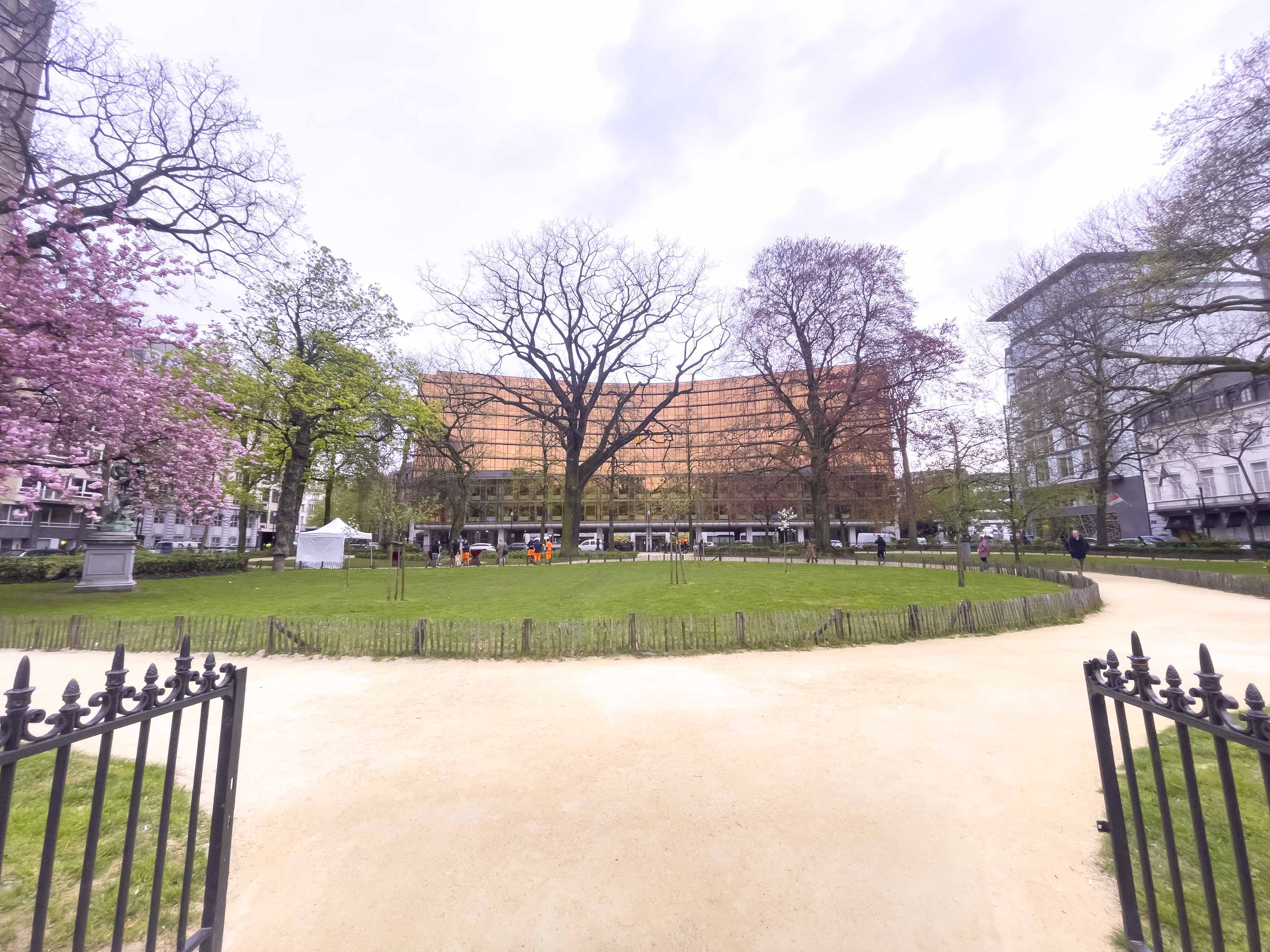Restored and reunited Square de Meeûs regains former glory
With the restoration works of Square De Meeûs completed, Brussels State Secretary for Heritage Pascal Smet inaugurated this renewed green space on 20 April. He did so in the presence of the mayor of Ixelles, Christos Doulkeridis, and the Alderwoman of Ixelles for Green Spaces and Vegetation, Audrey Lhoest.
“Square de Meeûs was a symbol of bourgeois urbanisation in the Leopold Quarter at the beginning of the 19th century. Now this green gem has regained its former glory as a result of a restoration 80% financed by the Brussels Region. This part of the square has long been neglected, but now it has been reunited with its other side (city of Brussels side). Brusselers and Europeans can now enjoy an embellished, renovated green space in the European Quarter. Nature and biodiversity can once again flourish there,” explained Pascal Smet, Brussels State Secretary for Heritage.
The renovation works, 80% of which funded by the Region for a total amount of 338.070,90 € , were focused on the identical restoration of the fences, the substructures in bluestone around the square and the dolomite pathways of this listed landscape.
“The renovation of Square de Meeûs was long awaited by local residents and is also very important for the image of the European Quarter. Moreover, it enhances the presence of four remarkable trees that are Ixelles heritage: two walnut trees, a yellowwood and a sycamore.” declared Audrey Lhoest, Alderwoman of Ixelles for Climate, Green Spaces and Vegetation.
The square is split in two by Rue du Luxembourg; the northern part belongs to the city of Brussels, the other to the municipality of Ixelles. It is named after Ferdinand de Meeûs, an important Belgian banker and financier, and developed in the same period as the Leopold Quarter. Architect Tilman-François Suys initially designed it as an open square in 1837. In 1862, landscape architect Louis Fuchs transformed it into a square with fencing.
“The redevelopment of this landscape embellishes the neighbourhood's surroundings and restores its heritage. It also contributes to the feeling of safety and togetherness in a multicultural neighbourhood.” said Christos Doulkeridis, Mayor of Ixelles.





